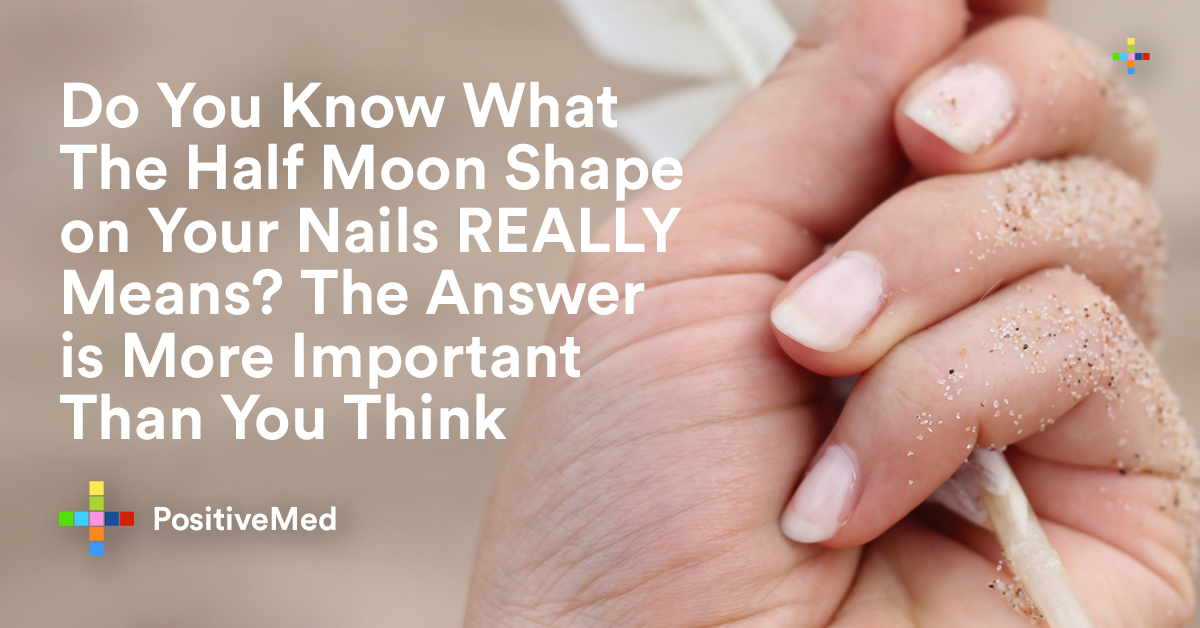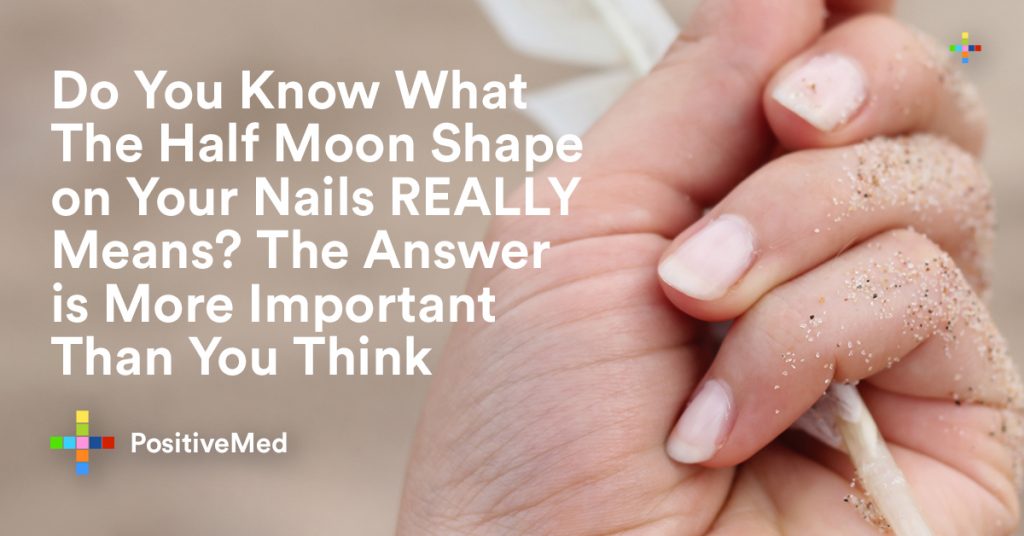Have you noticed the white, half moon shape at the base of your fingernails? This is called the lunula, which means small moon, and it’s very important to the health of your nails. Looking at your lunula is also a good way to keep an eye on the health of the rest of your body.

How Your Nail Grows
Underneath the skin covering the base of your nails is the root, or matrix of the nail. This root is where new nail cells are made, and it’s the only place the fingernail is alive. If the root is damaged, the nail will become permanently deformed, so it is important to protect it. The rim of skin covering the root is the cuticle. It protects the root from the effects of water and bacteria, which might harm your nail as it forms. The condition of the root, cuticle and lunula are all important indicators of your health.
A normal nail has a clearly noticeable half moon shape of the lunula, and a pink nail bed. The lunula lies right over the part of your nail bed where the new nail is growing out. As the new nail grows, the nail cells are compacted down so they can be stronger. While blood vessels underneath the nail bed normally make the nail look pink, they are harder to see in this area and look white. A strong, white lunula is considered evidence of a rich blood flow to the matrix. This also indicates a healthy and energetic person with a strong immune system. A white lunula means you have good circulation that is good enough to reach to the tips of your fingers and tips of your toes.
Lunula Colors
RELATED ARTICLE: What Are the White Dots on My Nails?
Not everyone’s lunula is noticeable. If yours, normally is noticeable and the lunula changes color or is missing, it may mean you have a problem with your health. The following examples are some of the diseases which may be indicated by these abnormalities of the lunula. If you notice any of these sudden changes, you should consult your doctor immediately.
Pale or bluish lunula – Possible diabetes with poor circulation
Azure or purple lunula – Wilson’s disease, which is caused by too much copper in the organs
Red lunula – Heart failure, lupus, or systemic diseases
Brown or black lunula and nail – Excessive fluoride ingested
Yellow lunula – Caused by tetracycline therapy
Lunula disappears – Possible anemia or malnutrition
Lunula disappears and nail turns yellow – Rheumatoid arthritis or chronic sinusitis
Lunula disappears and nail turns brown – Renal failure
Restoring Lunula Health
Once you’ve regained your health, there are two ways to restore the look of your nails. The best way is to eat foods that are rich in protein, such as eggs, meat,
Indulging in regular nail and hand massages is an enjoyable way to help your nails recover. By massaging the root and lunula with warm cuticle oil, the blood flow necessary for proper growth is improved. Extending your hand moisturizer over the nail will keep the cuticle soft and further protect the root. Try a natural oil massage into the nail (at the base) to keep your nail bed moist.
Expect it to take about six months for the damage to grow out from the root to the free edge. As it does so, you should see any discolorations replaced by healthy, pink nails. In no time you will once again have strong, healthy nails with a beautiful half moon lunula.






